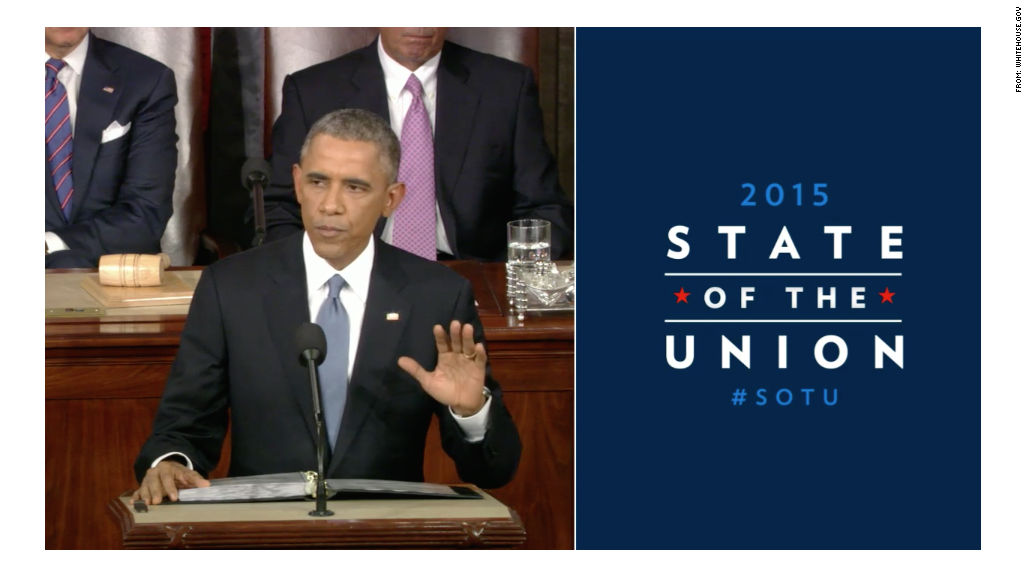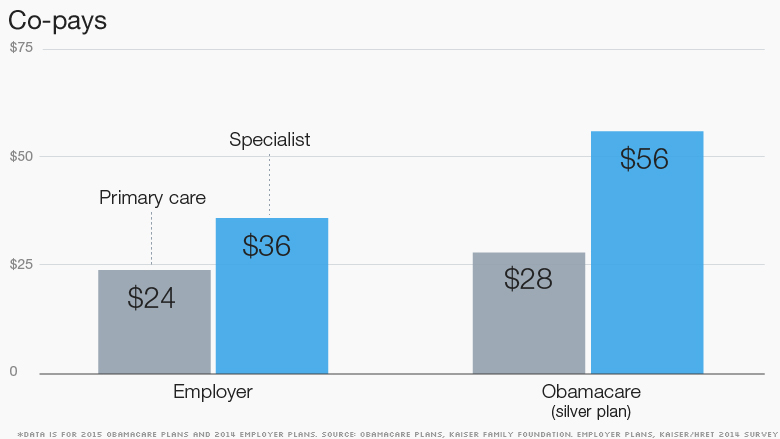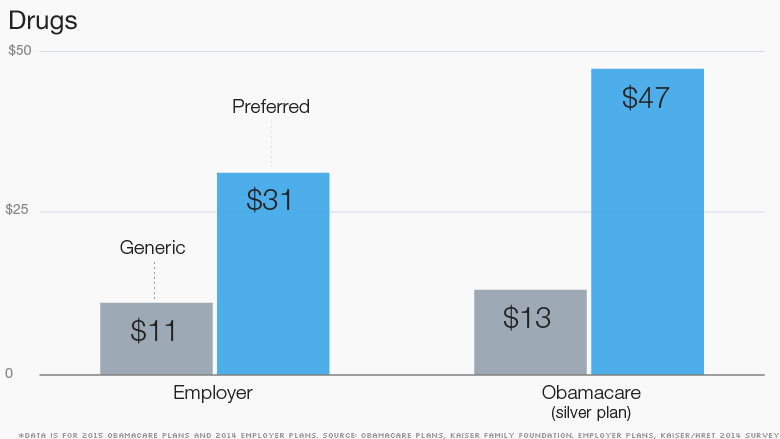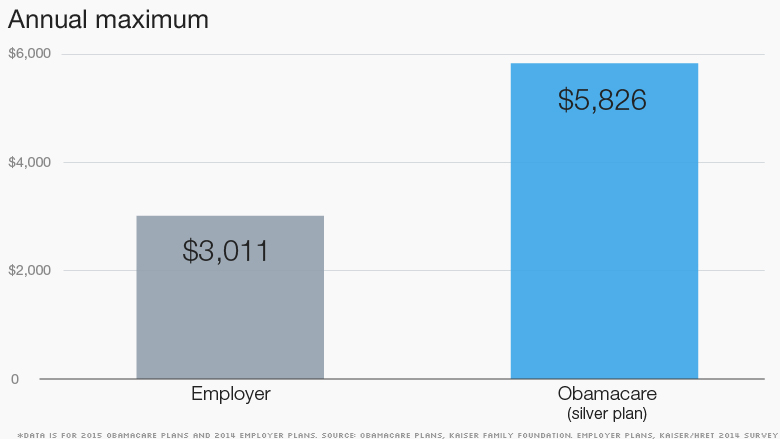
Obamacare enrollees have to shell out a lot more to see the doctor or get medications than their peers with job-based health insurance.
Deductibles, co-payments, and drug payments are higher under the average Obamacare silver-level plans -- the most popular -- than employer policies, according to a CNNMoney comparison of reports by Kaiser Family Foundation and Health Research & Education Trust. The reports looked at policies offered on the exchanges for 2015 and those enrolled in employer plans in 2014.
To be sure, having Obamacare coverage is often better than being uninsured, especially if you rack up big bills through a major illness or accident.
Obamacare also offers cost-sharing subsidies for low-income Americans, which reduces their deductibles and co-pays. Health reform also mandated that insurers fully cover a range of preventative services, such as an annual wellness exam and various screenings, for free.
And there is wide variety in out-of-pocket costs in both Obamacare and job-based plans. For many in the individual market, Obamacare eliminated sky-high deductibles of $10,000 or more that were common before health reform.

"The cost sharing is higher on the exchange than in the employer market, but it's lower than it was before," said Gary Claxton, director of the Health Care Marketplace Project, at the Kaiser Family Foundation.
Those who need regular medical care can often opt for policies with smaller out-of-pocket costs, but they usually come with higher monthly premiums. For instance, gold-level Obamacare plans have lower deductibles and co-pays but cost more per month. Employers offer plans with more generous benefits, but they too come at a price.
Related: Cost keeps uninsured from enrolling in Obamacare
High deductibles have been a sore point with some Obamacare enrollees. They have complained that they have to shell out thousands of dollars, on top of their monthly premium, before their insurance kicks in. Employers have also been raising deductibles, but they are generally lower than in many Obamacare plans.

Even after they meet the deductible, enrollees in both Obamacare and work-based plans have to fork over a co-pay or co-insurance, a share of the bill, to see a doctor. Employers have been raising their co-pays in recent years, but those in Obamacare plans are still higher.
When it comes to co-insurance, Obamacare policyholders have to shoulder a larger burden. Obamacare enrollees will have to pay 26% of the charge to see a primary care doctor or a specialist, while those in job-based insurance pay only 18% for primary care and 19% for specialist visits.

Most health insurance plans now offer tiered levels of drug coverage, depending on the prescription needed. You'll pay about the same amount for generic drugs, but preferred brand-name drugs are pricier under Obamacare.

Before Obamacare, plans on the individual market usually had no annual ceiling on out-of-pocket costs. Employer plans often did set a limit on workers' liability each year.
Now, both groups have that protection, though Obamacare enrollees are responsible for nearly twice what employees are, on average.
Whatever plan they have, consumers should brace for higher out-of-pocket costs in the future. Employers and insurers are pushing more of the burden onto patients, partly in an effort to keep premiums in check and partly to make consumers more conscious of their health care spending.
Related: 5 ways you pay more for health insurance
Do you rely on tips as part of your compensation? Have you noticed a change in tipping habits? Would you prefer a regular salary? Share your story.


